When My Brother’s Table needed help, the Marine Science Center faculty delivered
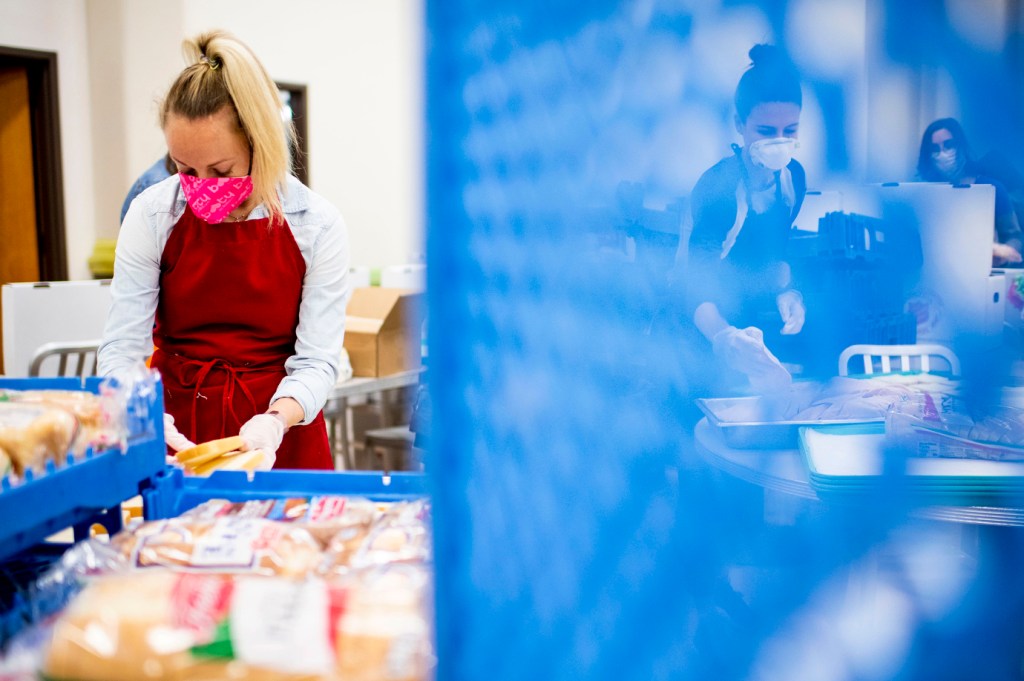
On a normal day at My Brother’s Table, a soup kitchen in Lynn, Massachusetts, guests would banter with long-term volunteers, and on occasion someone would play the piano that sits in the corner.
The organization, which is the largest soup kitchen on Massachusetts’ North Shore, was a space that buzzed with chatter, as guests came in and took trays of food from the cafeteria-style setup, chatted with long-time volunteers, and stayed to eat in the dining room.
These days, it’s a distinctly quieter atmosphere. The dining room is empty, the kitchen has shifted to to-go meals, the dining line closed.
But the community spirit behind the Table still shines bright, says Jason Sidman, president of the Table, and director of partnership relations in the Ph.D. Network at Northeastern.
“It’s so different; it’s almost like a shell of itself, but on the other hand, all of our guests really appreciate what we are doing and appreciate the circumstances,” says Sidman. “I think it’s still a happy place in that way.”
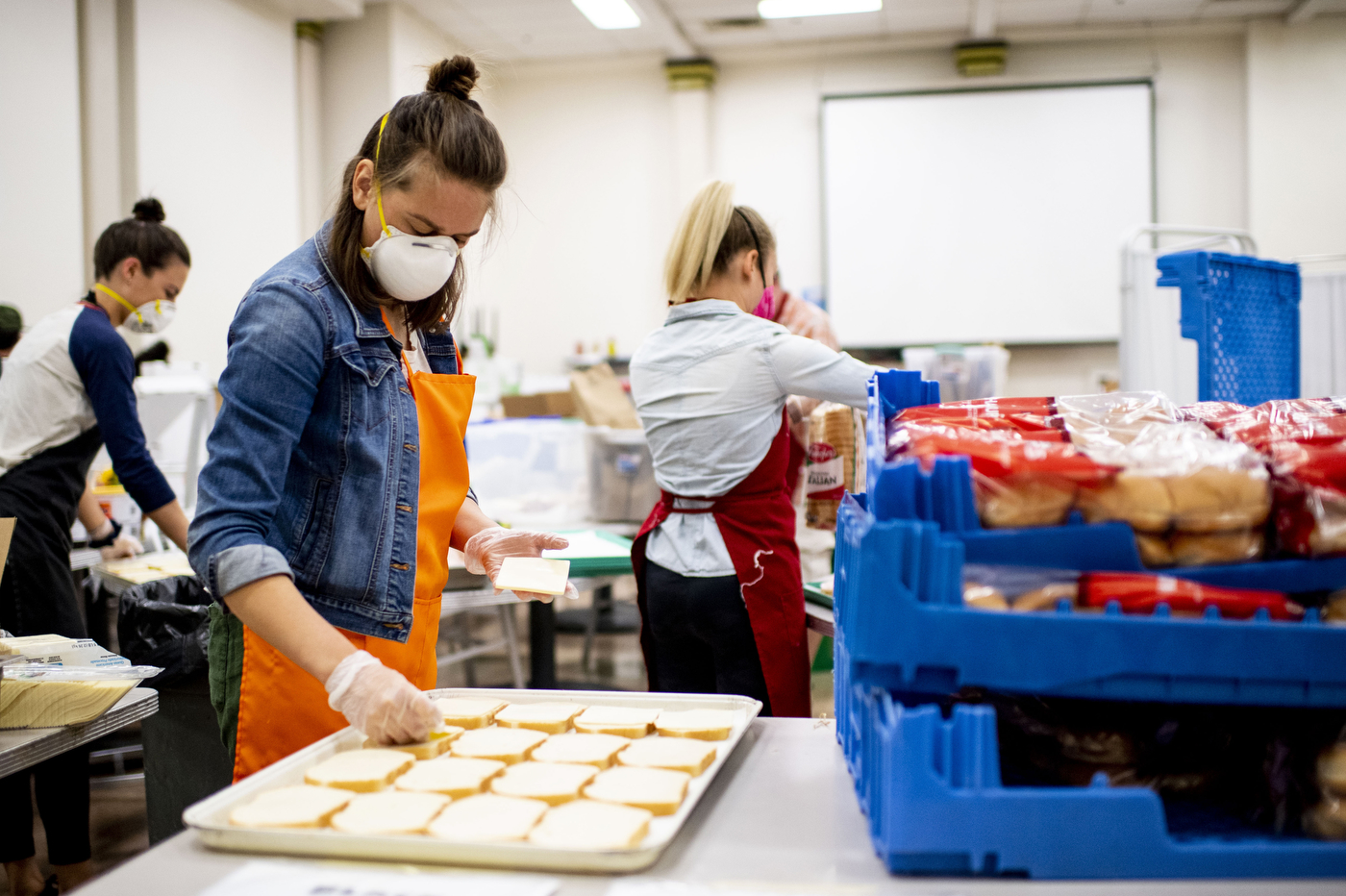

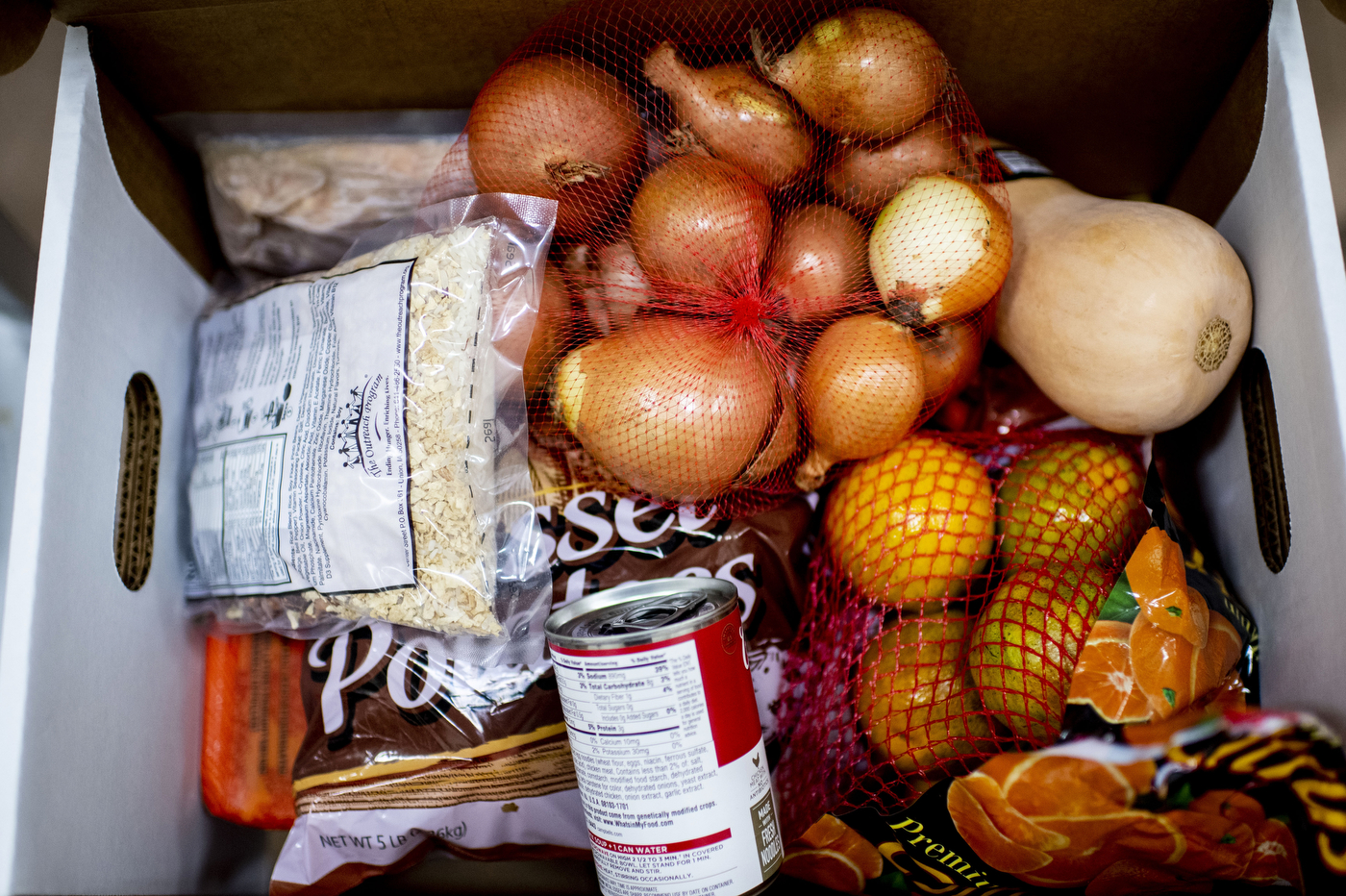
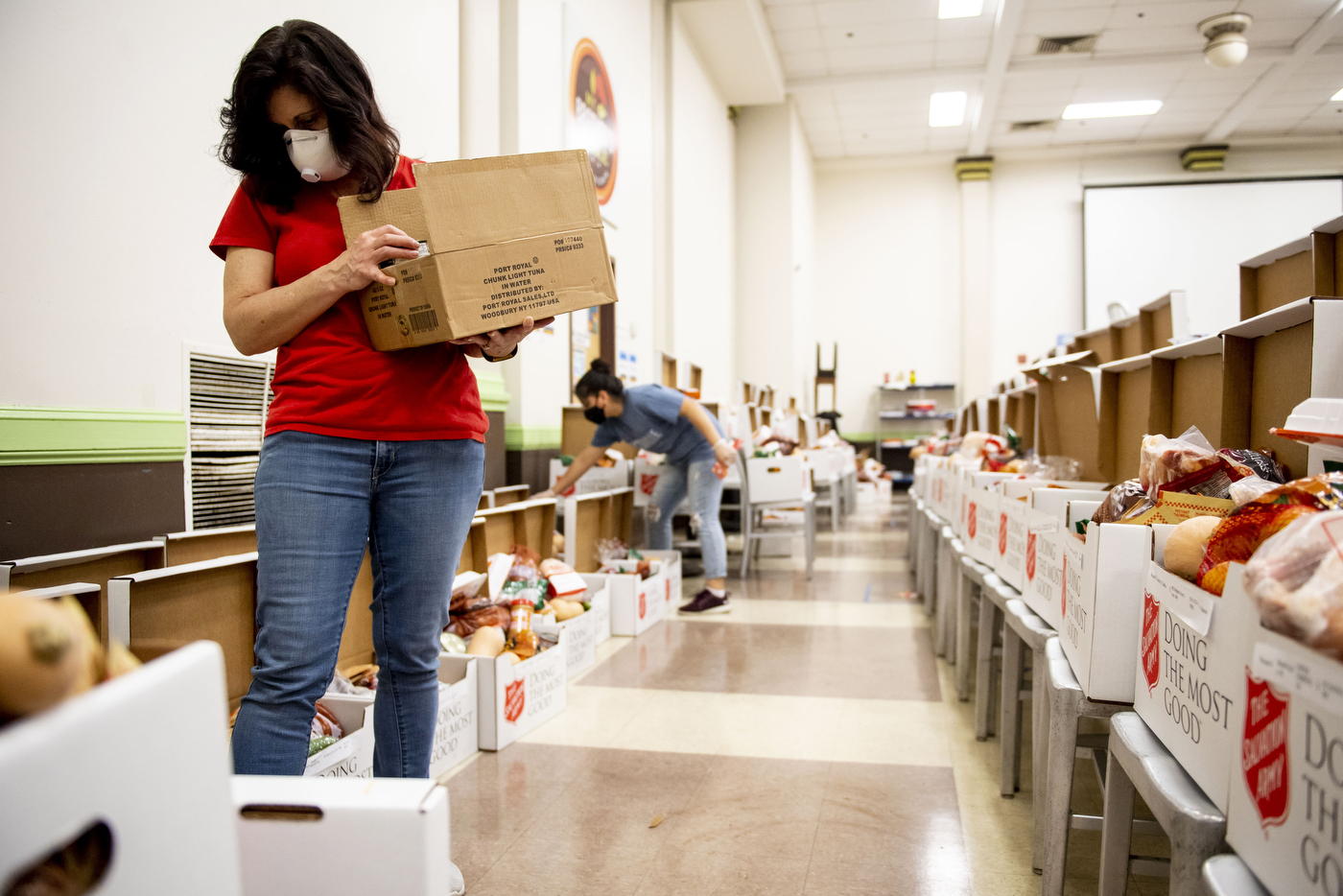
As with so many organizations, the COVID-19 pandemic has forced My Brother’s Table to change how they serve guests while maintaining the positive atmosphere the Table is known for. Much of that comes down to community support, and the community at Northeastern’s Marine Science Center in Nahant, Massachusetts, has come together to help in a variety of ways.
Torrance Hanley, associate research scientist at the Marine Science Center, has been preparing lunches and dinners at home, and dropping off 50 meals each week at the Table.
“When I saw the opportunity to participate in preparing lunch and dinner bags, I was excited to take some of the load off of staff and to do more than give money, but actually help prepare things,” says Hanley.
With in-person dining closed, organizers at My Brother’s Table have switched to handing out to-go meals. They’ve also set up four stations in the corners of the former dining room where guests can pick up prepared meals. Staff monitor the number of people in the building to keep density down, and have extended hours so there is less of a rush at one time.
Meanwhile, volunteers sign up to prepare lunch or dinner bags, then they buy the supplies and pack the bag, and finally drop them off at My Brother’s Table. Each dinner bag has a drink and a snack of the volunteers’ choosing, and the Table adds something heartier later. Lunch works the same way, but volunteers also make peanut butter and jelly sandwiches, while the Table adds a hot soup.
“Everything’s had to change since the pandemic,” says Sidman.
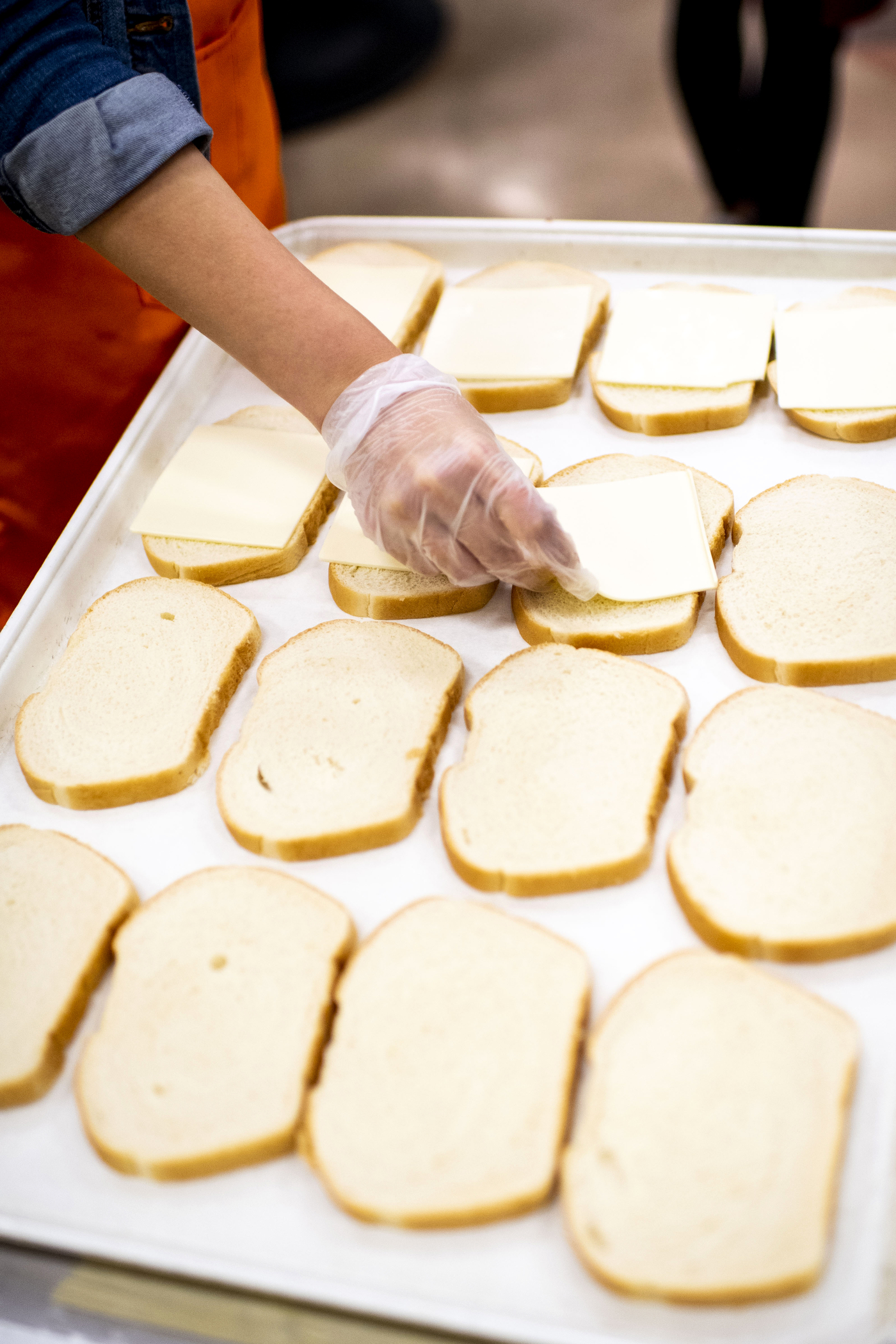
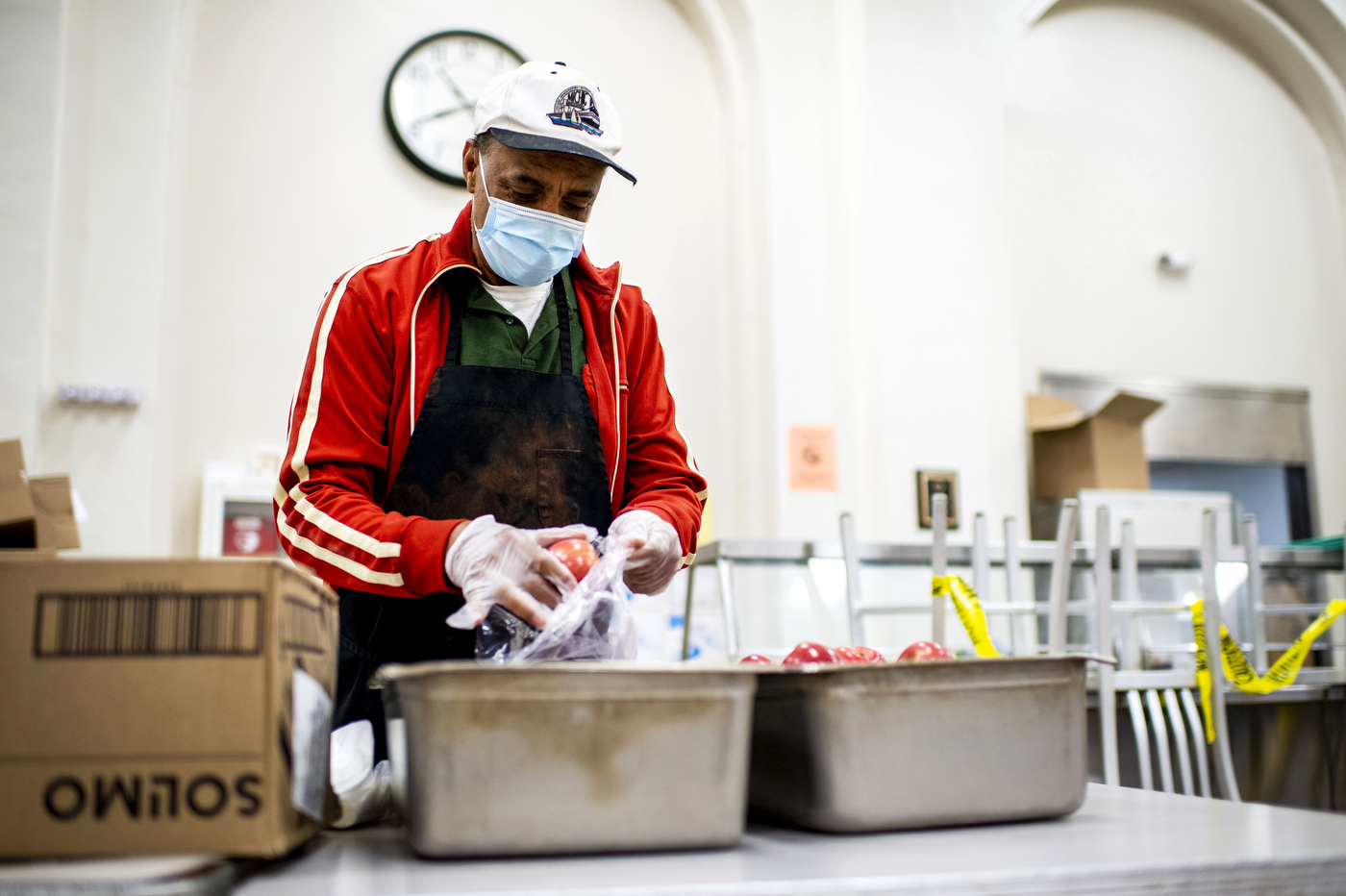
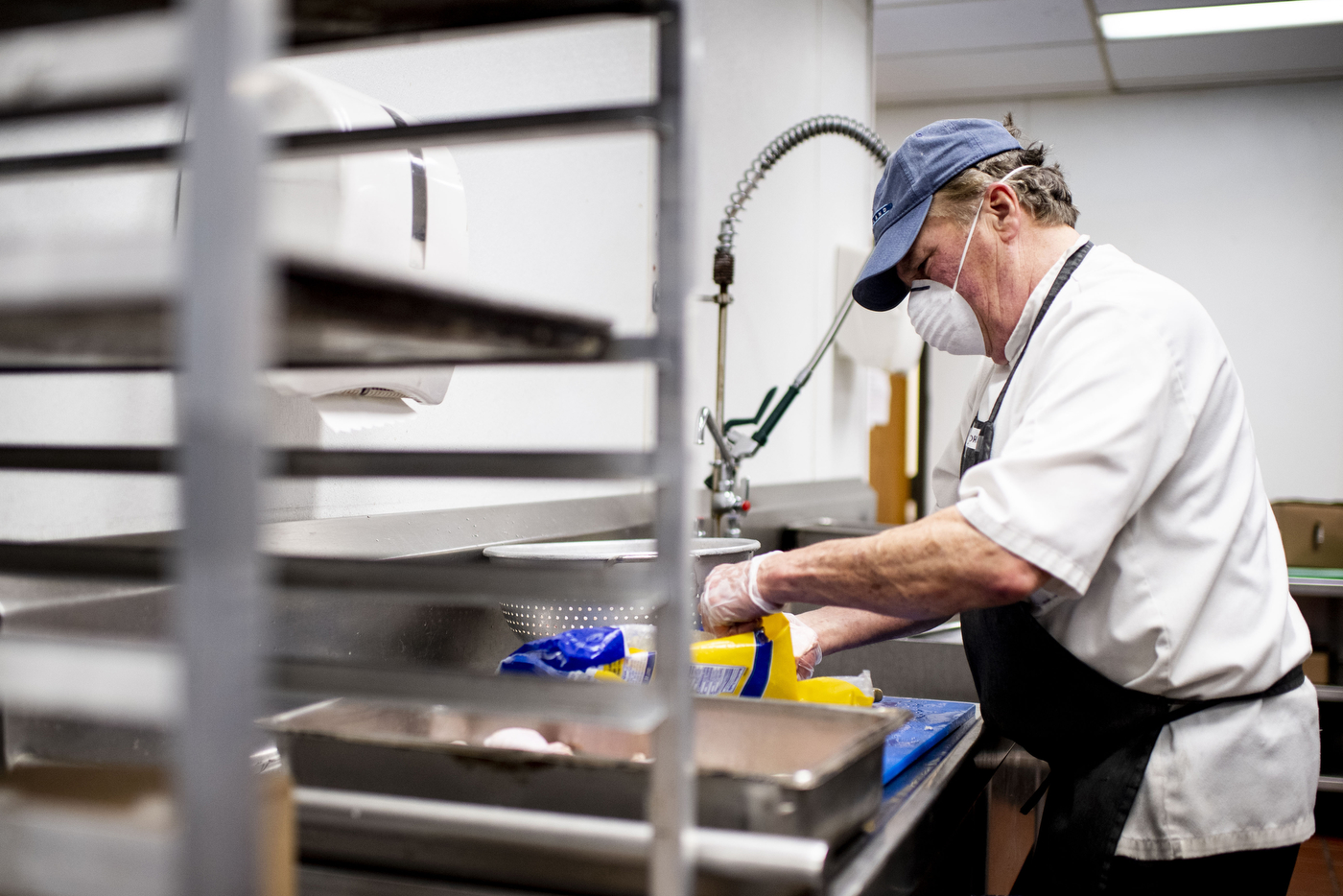
The number of meals served at the Table since the start of the pandemic has skyrocketed. In April 2019, they served 16,673 meals. In April 2020, that number more than doubled—they served 36,455 meals. And on April 28, 2020 they had the busiest day in the Table’s history, serving 653 meals.
For Hanley, it’s been an important opportunity to do hands-on volunteer work while staying safe during the pandemic. And, it’s been a family affair.
“We have a toddler and we have been explaining the importance of making sure people have enough food,” says Hanley. “He’s very excited to put the snack in every bag.”
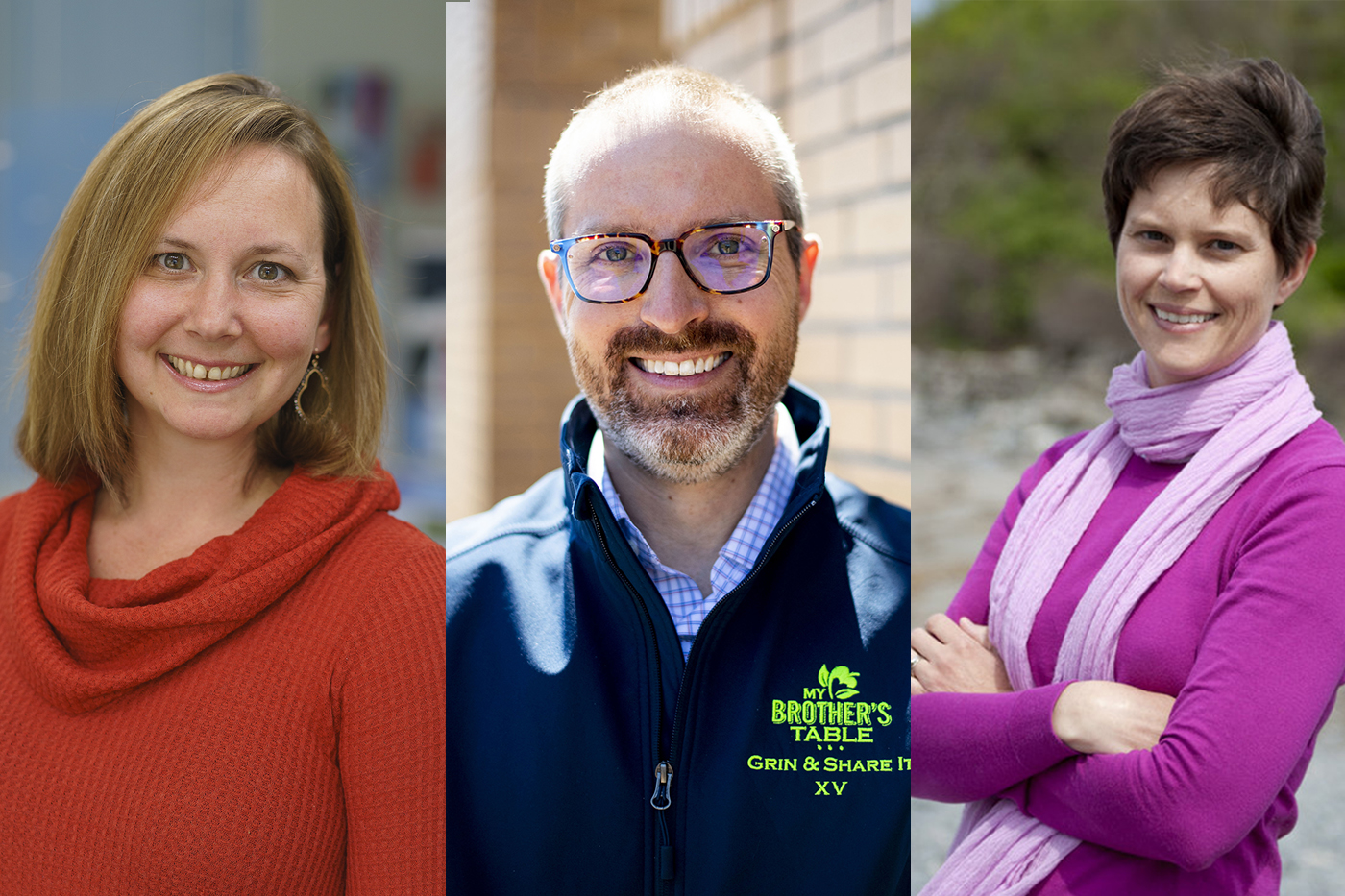
From left to right, Torrance Hanley, Jason Sidman, and Randall Hughes. Courtesy photos.
Randall Hughes, associate professor of marine and environmental sciences, first volunteered at the Table with Hanley, and has also volunteered preparing meals during the pandemic. For Hughes, it’s been inspiring to see her coworkers at the Marine Science Center unite around My Brother’s Table.
“It’s nice to see everyone coalesce around a common project and have something everyone can rally around,” says Hughes.
Even her daughter Lilli got involved, taking the challenge of the pandemic and turning it into an opportunity to help.
Lilli is in fifth grade, and as she approached her spring break from online classes, she was looking for something to do with her time. Her friend Sofia came up with the idea to sew masks to sell, and then donate the proceeds to charity. The two of them decided to sell masks for $5-10 apiece, and donate the money to My Brother’s Table.
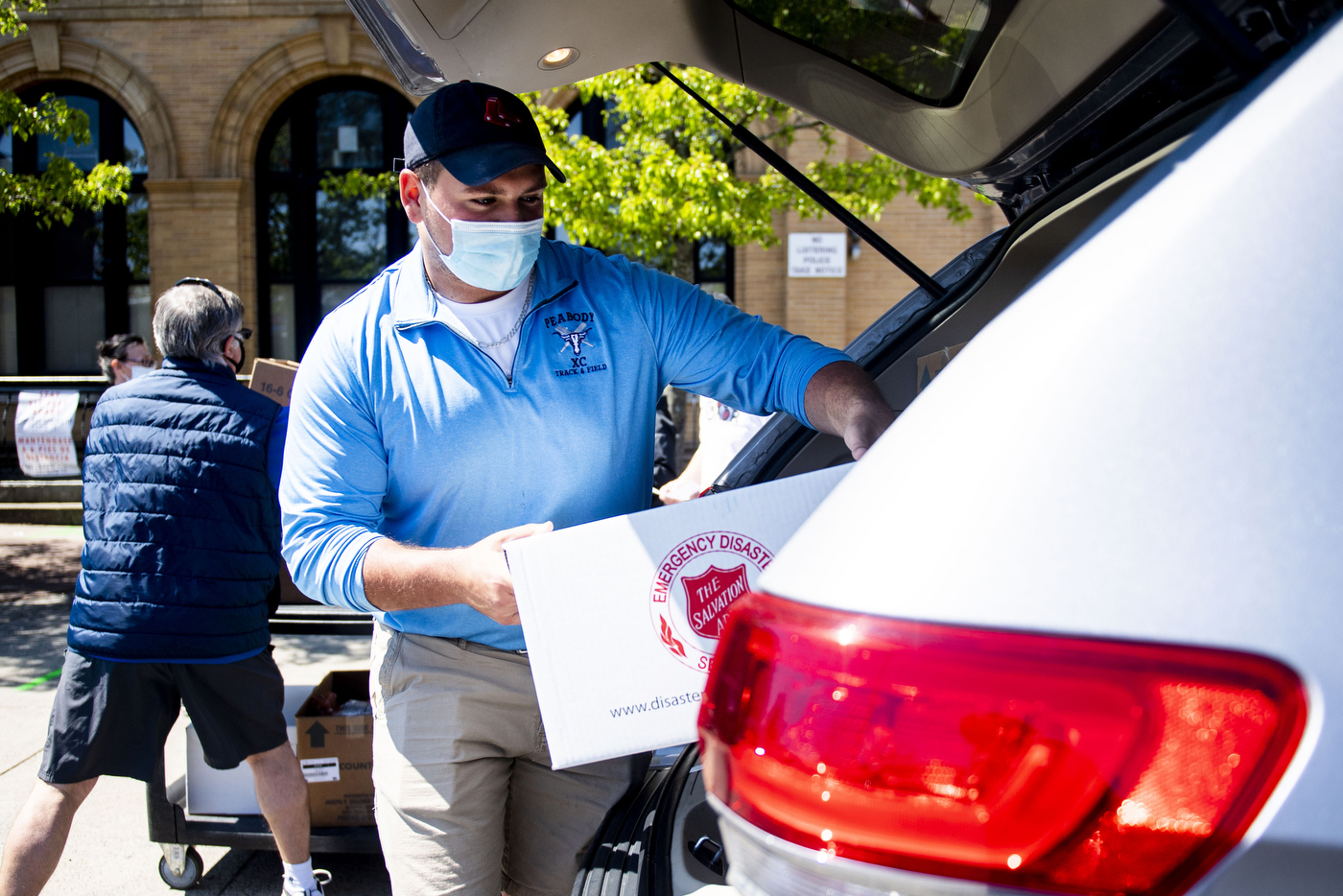
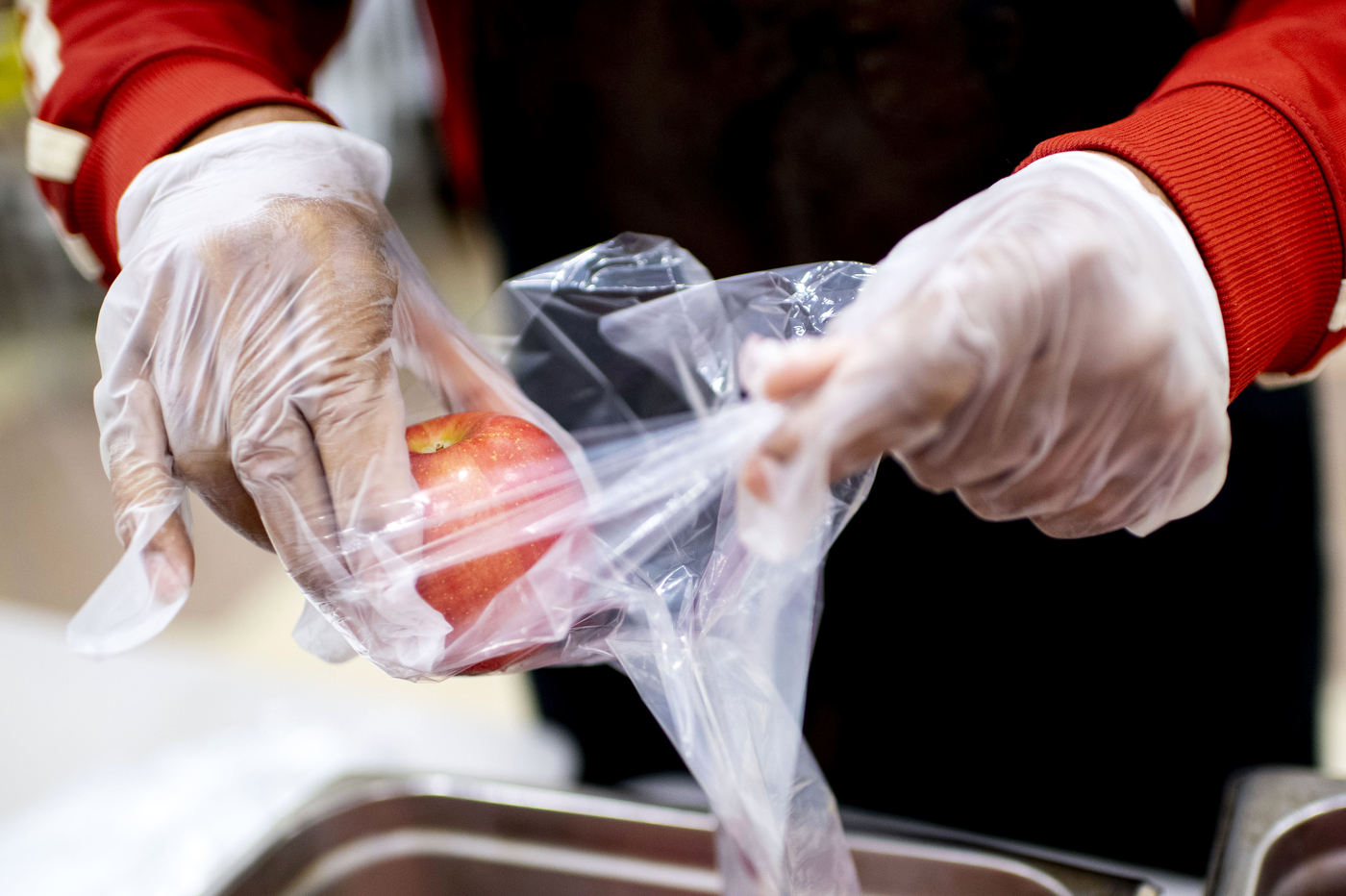
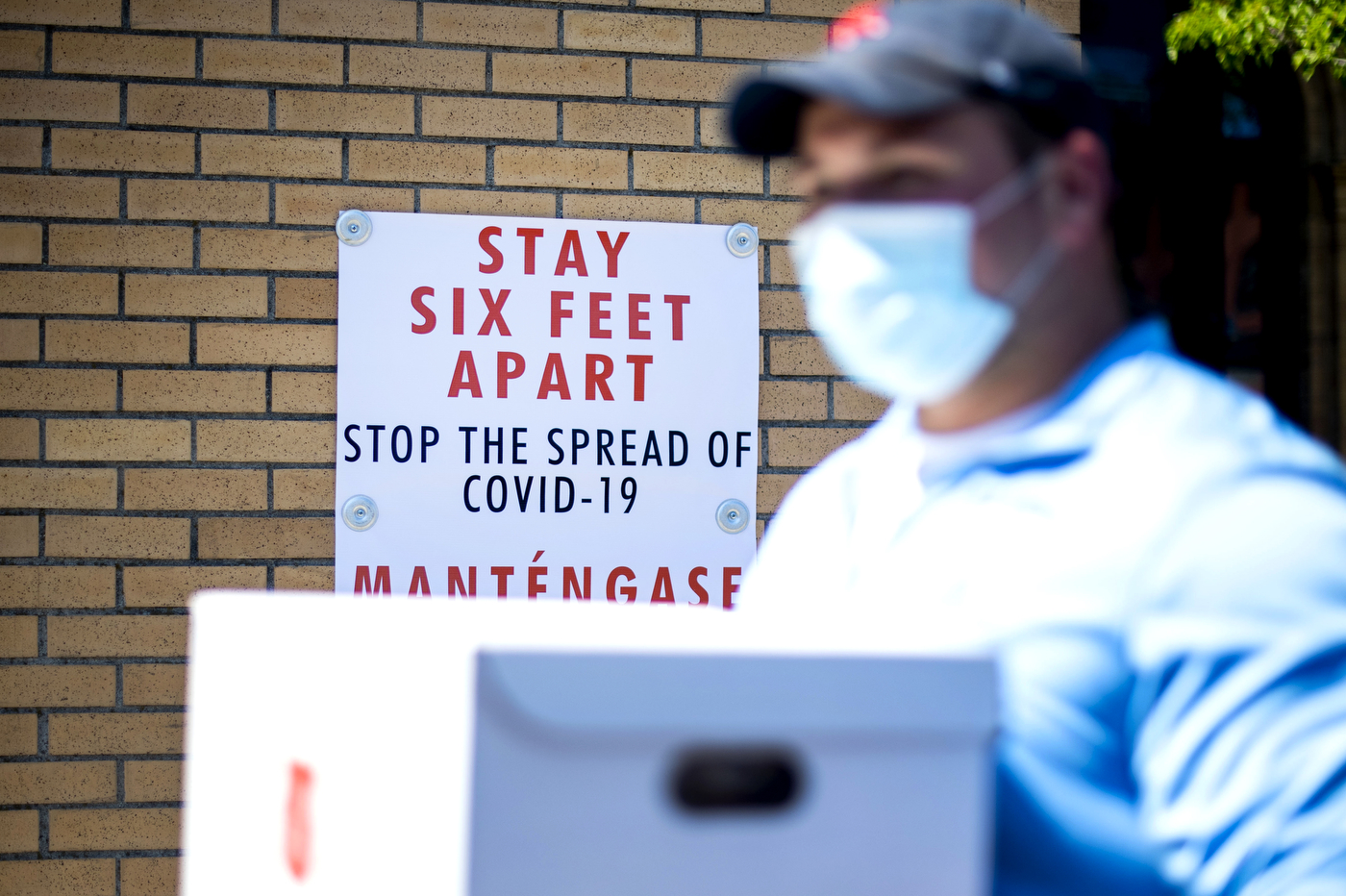
Sofia’s mom posted on Facebook, and Hughes sent out some texts to get the word out, and the project was met with a wave of almost overwhelming support, and lots of requests for masks.
It wasn’t always smooth sailing, at the start of the project Lilli broke her arm and had to get a cast on her dominant arm, making sewing even more difficult. Nonetheless, the girls pushed through and now have made almost 200 masks and donated almost $2,500.
Lilli’s advice for people looking to get involved?
“Don’t give up—persevere,” she says. “Choose something you know how to do and enjoy.”
For media inquiries, please contact media@northeastern.edu.





